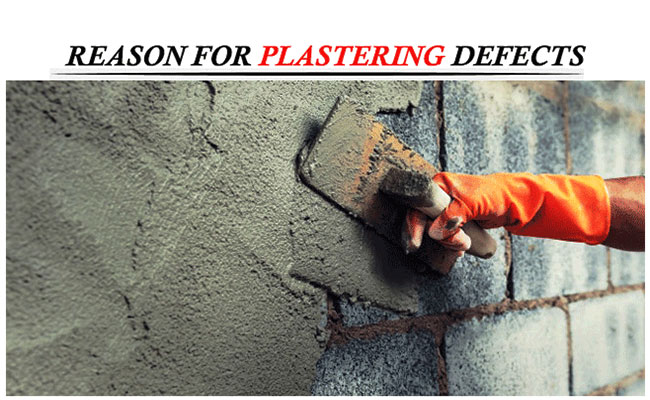Reasons for plastering defects

In plastering work, the following defects are commonly found:-
Blistering of plastered surface: Blistering means the development of small patches due to bulging of plaster outside the plastered surface as well as emerging of late slaking of lime particles in the plastic.
Cracking: cracking comprises of cracks or fissures in the plaster work because of the following factors:-
Formation of background improperly.
Structural flaws in building
Discontinuation of surface.
Movements in the background caused by the thermal expansion or quick drying.
Movements in the plaster surface itself, because of expansion (for gypsum plaster) or shrinkage (for lime – sand plaster).
Extreme shrinkage owing to use of thick coat.
Defective workmanship.
Crazing: It happens because of a series of hair cracks development on plastered surface which lead to cracking.
Efflorescence: It refers to whitish crystalline material found on the surface owing to existence of salts in plaster – forming materials as well as building materials similar to bricks, sand, cement etc. and even water. It makes the appearance of the plaster ugly. As a result, the adhesion of paint with wall surface is significantly changed. In order to take off efflorescence partially through dry brushing and washing the surface repetitively.
Flaking: Flaking means the development of very loose mass of plastered surface that occurs because of weak bond among successive coats.
Peeling: It occurs due to total displacement of some areas of plastered surface that leads to development of a patch. It also happens for inaccurate bond.
Popping: Popping means the development of conical hole in the plastered surface because of the existence of some particles which enlarge on setting.
Rust stains: These are often produced when plaster is used on metal laths.
Uneven surface: It is mainly created because of substandard workmanship.

